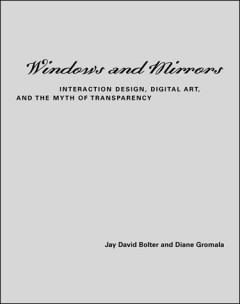Filter by

Theorizing Digital Cultural Heritage: A Critical Discourse
This is a collection of theoretical and practical perspectives from a range of disciplines on the challenges of using digital media in research, preservation, management, interpretation, and representation of cultural heritage.OCLC-licensed vendor bibliographic record.
- Edition
- -
- ISBN/ISSN
- 9780262269742
- Collation
- 1 online resource (x, 465 pages) :illustrations.
- Series Title
- -
- Call Number
- -

Virtual Art: From Illusion to Immersion
An overview of the art historical antecedents to virtual reality and the impact of virtual reality on contemporary conceptions of art.Although many people view virtual reality as a totally new phenomenon, it has its foundations in an unrecognized history of immersive images. Indeed, the search for illusionary visual space can be traced back to antiquity. In this book, Oliver Grau shows how virt…
- Edition
- -
- ISBN/ISSN
- 9780262274265
- Collation
- 1 online resource (xiv, 416 pages) :illustrations.
- Series Title
- -
- Call Number
- -

The Metainterface: The Art of Platforms, Cities, and Clouds
How the interface has moved from the PC into cultural platforms, as seen in a series of works of net art, software art and electronic literature. The computer interface is both omnipresent and invisible, at once embedded in everyday objects and characterized by hidden exchanges of information between objects. The interface has moved from office into culture, with devices, apps, the cloud, and d…
- Edition
- -
- ISBN/ISSN
- 9780262346559
- Collation
- 1 online resource (248 pages).
- Series Title
- -
- Call Number
- -

https://direct.mit.edu/books/book/2413/Windows-and-MirrorsInteraction-Design-…
The experience of digital art and how it is relevant to information technology.In Windows and Mirrors: Interaction Design, Digital Art, and the Myth of Transparency, Jay David Bolter and Diane Gromala argue that, contrary to Donald Norman's famous dictum, we do not always want our computers to be invisible "information appliances." They say that a computer does not feel like a toaster or a vacu…
- Edition
- -
- ISBN/ISSN
- 9780262268998
- Collation
- 1 online resource (xi, 182 pages) :illustrations.
- Series Title
- -
- Call Number
- -

Art in the age of machine learning
"This book examines artistic practices that use machine learning and computational technologies through historical perspectives surrounding adaptive systems from the 1950s onwards"--OCLC-licensed vendor bibliographic record.
- Edition
- -
- ISBN/ISSN
- 0262367092
- Collation
- 1 online resource.
- Series Title
- -
- Call Number
- -

AI renaissance machines :Inside the new world of machine-created art, literat…
OCLC-licensed vendor bibliographic record.
- Edition
- -
- ISBN/ISSN
- 9780262354592
- Collation
- 1 online resource (408 pages).
- Series Title
- -
- Call Number
- -
 Computer Science, Information & General Works
Computer Science, Information & General Works  Philosophy & Psychology
Philosophy & Psychology  Religion
Religion  Social Sciences
Social Sciences  Language
Language  Pure Science
Pure Science  Applied Sciences
Applied Sciences  Art & Recreation
Art & Recreation  Literature
Literature  History & Geography
History & Geography